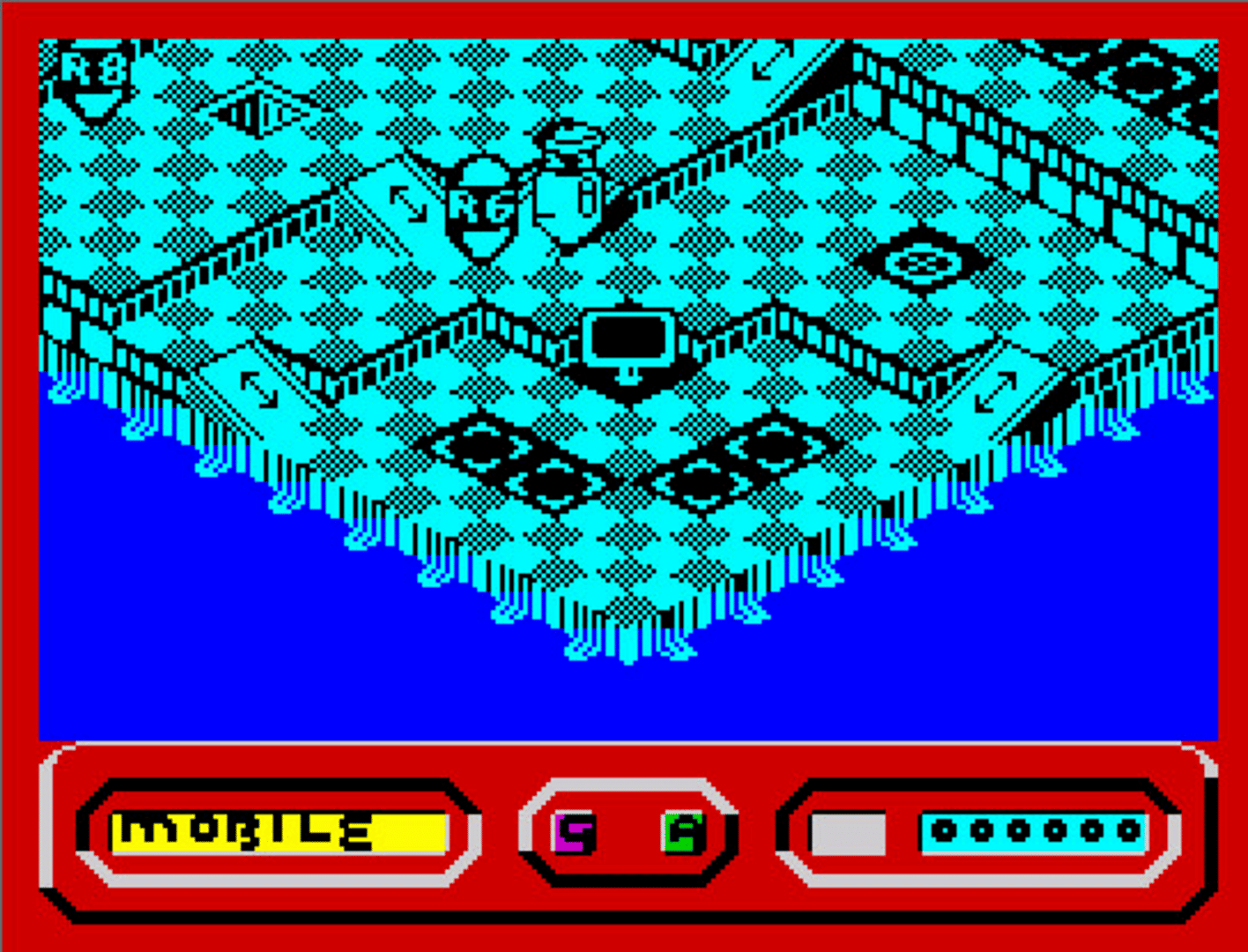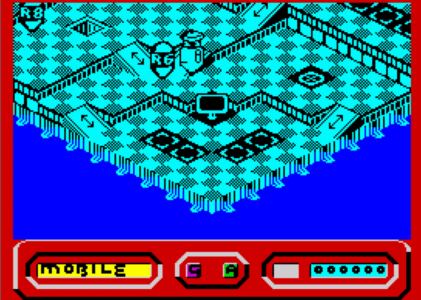Quazatron is a timeless classic in the world of video gaming. Released in 1986, this game has left an indelible mark on the gaming community. In this article, we will delve into the depths of Quazatron, exploring its genre, platforms, gameplay, key features, strategies, cheats, reviews, cultural impact, sequels, and examples of similar games.
Genre and Platforms
Genre: Quazatron belongs to the action-adventure genre with a heavy emphasis on strategy and puzzle-solving. It is a spiritual successor to the 1983 game “Paradroid” and was developed by Hewson Consultants, known for their innovative and challenging games.
Platforms: Quazatron initially launched for the ZX Spectrum and the Commodore 64, two of the most popular home computer platforms of the 1980s. Its success later led to ports for other systems like the Amstrad CPC, MSX, and Atari 8-bit computers, expanding its reach to a broader audience.

Gameplay
Quazatron’s gameplay revolves around guiding a droid through a series of isometric levels set within a giant spaceship. The objective is to explore each level, destroying enemy robots, and ultimately gain control of them. Here’s a breakdown of the core gameplay elements:
- Droid Control: You play as a droid, and the game introduces a unique control mechanic. You don’t directly control the droid but instead take control of other robots within the spaceship. This adds depth and strategy to the gameplay.
- Destroying Robots: To progress, you must destroy hostile robots by shooting or ramming into them. Each robot type has distinct abilities and behaviors, making encounters challenging and requiring different strategies.
- Energy Management: Managing your droid’s energy is crucial. You need energy to move, fire weapons, and take control of other robots. Running out of energy means game over, so efficiency is key.
- Puzzle Elements: Quazatron incorporates puzzle-solving elements. Some levels require solving puzzles to access new areas or defeat certain enemies.
- Upgrades: As you gain control of more advanced robots, you unlock new abilities and weapons, enhancing your droid’s capabilities.
Key Gameplay Features
Quazatron’s enduring popularity can be attributed to several key gameplay features:
- Strategy: The game demands strategic thinking as you choose which robots to control and when to engage enemies. Each decision impacts your progress.
- Variety: With a wide array of robot types, each with unique traits, the game offers diverse gameplay experiences. Adapting to different challenges keeps the gameplay fresh.
- Isometric Graphics: The isometric viewpoint was a novelty at the time, adding depth and dimension to the game’s visuals. It created a sense of immersion that was groundbreaking for its era.
- Immersive Soundtrack: Rob Hubbard, a renowned composer, created the game’s memorable soundtrack. The music enhances the overall experience and remains a fan favorite.
Strategies and Cheats

Mastering Quazatron requires skill and a deep understanding of its mechanics. Here are some strategies to help you navigate this challenging game:
- Energy Management: Always keep an eye on your energy levels. Conserve energy by using weaker robots for basic tasks and save the more powerful ones for combat.
- Observation: Study enemy behavior patterns. Knowing how they move and attack is crucial to outsmarting them.
- Puzzle-solving: Pay close attention to your surroundings. Many levels have hidden passages and puzzles that can be the key to success.
- Upgrade Wisely: Prioritize taking control of robots with better weapons and abilities, but be cautious not to deplete your energy too quickly.
As for cheats, Quazatron isn’t known for widespread cheat codes like some other games of its era. The challenge is part of its appeal, and overcoming obstacles without cheats is a satisfying accomplishment.
Reviews and Cultural Impact
Quazatron received widespread acclaim upon its release, earning high praise for its innovative gameplay and graphics. Critics and players alike were captivated by its unique control scheme and challenging puzzles. The game’s cultural impact extended beyond its initial release:
- Legacy: Quazatron is often cited as one of the standout titles from the 8-bit era and is remembered fondly by gamers who grew up with it.
- Influence: Its control mechanic influenced other games, inspiring a generation of game developers to experiment with unconventional gameplay ideas.
- Remakes and Ports: Due to its enduring popularity, Quazatron has seen remakes and modern ports, introducing it to new generations of gamers.
- Nostalgia: The game continues to evoke nostalgia among retro gaming enthusiasts, with discussions and playthroughs still prevalent in online gaming communities.
Sequels and Examples of Similar Games
While Quazatron itself doesn’t have direct sequels, its predecessor, “Paradroid,” and its spiritual successor, “Metal Mutant,” are worth exploring for fans of the game.
Paradroid (1985): This game, also developed by Andrew Braybrook, served as the inspiration for Quazatron’s gameplay. In Paradroid, you control a droid that must take over other robots on a spaceship, much like Quazatron.
Metal Mutant (1991): While not a direct sequel, Metal Mutant shares similarities with Quazatron. It features isometric graphics and robot-controlled gameplay. Players guide a mutant through a cybernetic world, solving puzzles and battling enemies.
Alien Breed (1991): Team17, known for the Worms series, developed Alien Breed. It offers top-down, isometric shooting action in a sci-fi setting, similar to Quazatron’s combat sequences.

BipBop II (1985): This game, while less known, has a similar isometric perspective and robot-controlled gameplay. Players take on the role of a maintenance robot navigating a complex environment.
In conclusion, Quazatron remains a beloved classic in the world of gaming. Its unique blend of strategy, puzzle-solving, and isometric graphics set it apart in its era and continue to captivate gamers today. Whether you’re revisiting the game for nostalgia or discovering it for the first time, Quazatron’s timeless appeal is undeniable.













